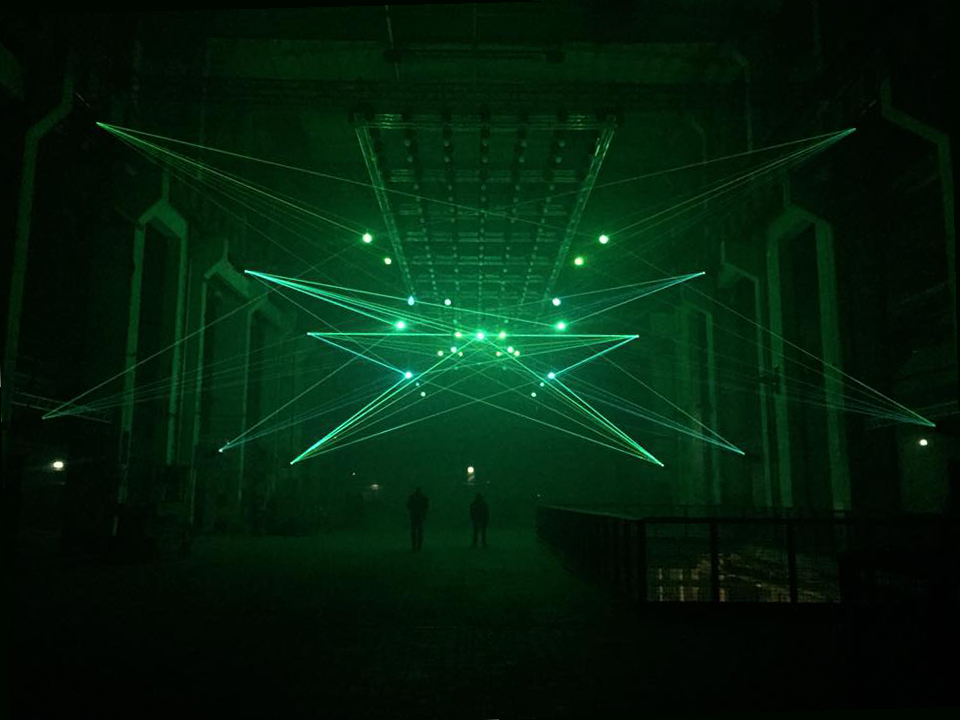From 4 to 7 February 2016, I attended the 29th edition of Transmediale, an annual festival for media art and digital culture in Berlin. It is the place to be for artists, scholars, critics, and activists that seek to express and address a critical understanding of contemporary culture and politics as saturated by media technologies. This year’s theme was ‘Conversation Piece’, through which Transmediale rebooted the format of the post-digital culture event and aimed to create a transitory space for the discussion of late capitalist anxieties. The theme is based on the inertia of conversations as a result of today’s global competitions between states, corporations, networks, and individuals to create the contexts and frameworks for conversations. The curatorial statement mentions that this competition has turned matters of urgent global concern (e.g. the war on terror, economic growth, refugee crisis, climate change, and big data) into pre-emptied conversations. Since Transmediale has dealt with these topics in the past, this year it was time to turn a reflective gaze on the medium of conversation itself. The program consisted of four thematic streams that functioned as conversation starters: Anxious to Act, Anxious to Make, Anxious to Share, and Anxious to Secure. Each stream had its own keynote talk, and subsequently unfold itself through panel discussions, workshops, and various hybrid formats.
The Anxious to Act stream addressed today’s challenges of action and activism. Its aim was to reflect on the need for renewed convergences beyond the technological in a time that offers great scopes for interaction, and many reasons to intervene. Anxious to Make reflected on mainstreamed maker culture, aiming to provide a broader appreciation of contemporary making practices, in terms of their limits, potentials, and (dis)associated cultures. The Anxious to Share stream started with anxieties about the unexpected consequences of the sharing economy, since the global expanse of seemingly well-intentioned endeavors have led to greater inequality (17 percent of the world’s population consumes 80 percent of the world’s resources). Lastly, Anxious to Secure aimed to investigate cultures of security in reaction to anxieties on both micro and macro scales, and ask: why do we secure the way we do, and does it actually provide security in the way we envision it?
Although these four anxious streams seem very pessimistic at first glance, this edition was, at least during some conversation pieces I attended, more optimistic than the previous one. The program was packed and FOMO was present, but fortunately, you can listen to or watch most of the talks online (the videos are not yet online). In what follows l will enumerate some of my personal highlights.
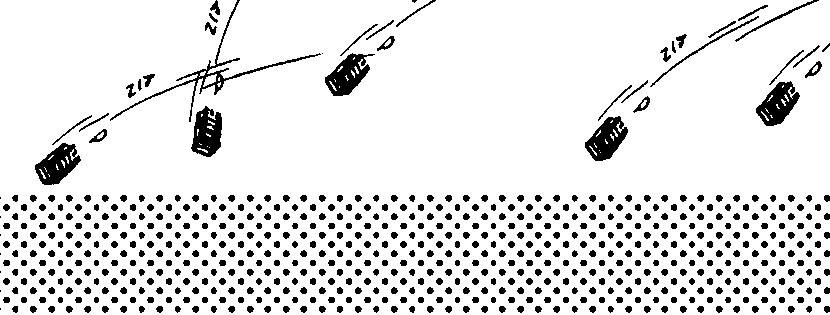
Transmediale 2016 artwork by The Laboratory of Manuel Bürger feat. Krazy Kat by George Herriman (image source).
Thu 04.02.2016 | Disnovation Research / Drone-2000
‘Disnovation Research’ is a research project by Nicholas Maigret and Bertrand Grimault, inquiring into the mechanics and rhetoric of innovation that has in many regards become a political program. The project challenges the idea of the glorification and propaganda of innovation, as one of the ideological driving forces of our era. Maigret states that it is the role of artists to challenge this function of innovation and question its agenda. One of the projects Maigret shows to illustrate his research is Melle Smets’ ‘Turle 1: The car from Africa’. It is a bottom up produced car by a local community in Ghana, made of European discarded car parts, in which the mechanics of technological production are reversed.
Daniel Rourke presented the #additivism (additive + activism) speculative research project (in collaboration with Morehshin Allahyari). The 3D Additivist Manifesto is a call to accelerate the development of the 3D printer and other technologies and push them to their absolute limits and even beyond, into the realm of the speculative, the provocative and the weird. Rourke and Allahyari believe that technology can open up new perspectives, providing us with the means to challenge the structures, ideas, and institutions that maintain the status quo. But technological change is according to the additivists, tied to the functions of capitalism: a system that profits the few, often at the expense of civil liberties or the environment. The manifesto calls creators and thinkers to action around a technology filled with hope and promise: the 3D printer. Considering this technology as a potential force for good, bad, and otherwise, the additivists aim to disrupt binary thinking entirely, drawing together makers and thinkers invested in the idea of real, radical, change.
In the dystopian performance Drone-2000 by Nicholas Maigret autonomous drones powered by dysfunctional algorithms were flying on stage while a woman was reading statements that related to the autonomy of machines and the internet of things, the one I wrote down: “On the internet of things nobody knows you are a fridge”
Thu 04.02.2016 & Fri 05.02.2016 | Excessive Research
The participants of the research workshop ‘Excessive Research’, organized by the Aarhus University, presented their papers in the peer-reviewed newspaper APRJA (A Peer-Reviewed Journal About), and in conversation with each other. The latest APRJA issue questions: what happens when research is less about exchange and more about excess? The presentations of Scott Wark, and Elisavet Christou stayed with me most. Wark’s research is about memes and one of the questions he asks is: what happens to a meme when it dies? He referrers to Constant Dullaart’s ‘Jennifer in Paradise’, which is a record of a death meme, since the Photoshop filters used in this artwork are no longer available in Photoshop. Elisavet Christou has just started working on her PhD about post-internet art. She is interested in the way post-internet art has changed since the net art of the 90s. For instance, at that time there was a different motivation for making art (exposing the medium, manipulating the medium, sometimes resistance, more political, dealing with technology as the subject matter). Christou is especially interested in how today’s art is circulating, presented, and exhibited in this age of ubiquitous digital media. You can read all the articles in the newspaper (and the previous newspapers) here.
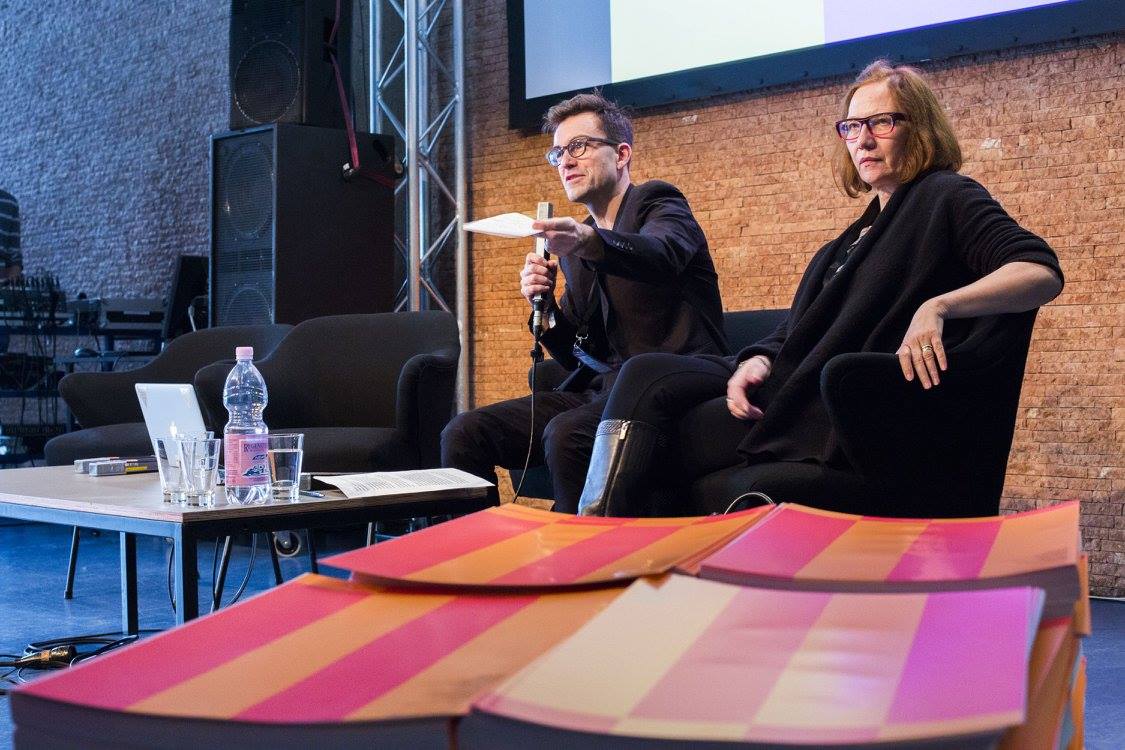
Photo by Julian Paul Pictures via Transmediale.
Fri 05.02.2016 | Keynote Conversation: Anxious to Share
A very interesting talk – that I unfortunately only partially attended – was given by Eyal Weizman (Forensic Architecture) about how data collection and analysis is changing the way human rights controversies are investigated, in part by using mobile phone footage from ordinary people. He explains how the analysis of sound spectrograms can identify different fires in order to reconstruct war narratives. He also created a ‘cloud atlas’ of bomb clouds that materialize time and shows bomb timing in space. Fortunately, there is an audio recording of this talk (the video follows soon), and this article about Forensic Architecture on Wired.
Fri 05.02.2016 | Book Launch: The Pirate Book by Nicolas Maigret and Maria Roszkowska
Another remarkable presentation was the book launch of ‘The Pirate Book’ by Nicolas Maigret and Maria Roszkowska. ‘The Pirate Book’ is a compilation of stories about sharing, distributing and experiencing cultural contents outside the boundaries of local economies, politics, or laws. The book is stapled into the latest edition of Neural (on a USB stick including all the cited works and materials), you can also read or order it here.

The Pirate Book by Nicolas Maigret and Maria Roszkowska (image source)
Sat 06.02.2016 | Book Launch: Autonomy Cube by Trevor Paglen & Jacob Appelbaum
Exploring different ways of using the internet in order to gain more privacy was a popular topic amongst thinkers and artists at Transmediale. Autonomy Cube is a sculpture by Trevor Paglen & Jacob Appelbaum, designed to be in art museums, galleries, libraries, and other civic spaces. In the sculpture a group of internet-connected computers create an open wireless Wi-Fi hotspot called ‘Autonomy Cube’. Anyone can join the network and use it to browse the internet. The network routes all wireless traffic through Tor, a global volunteer network of thousands of relays designed to anonymize data. Autonomy Cube is itself a Tor relay that can be used by others around the world to anonymize their internet data. When Autonomy Cube is installed, the sculpture, host institution, and users become part of a privacy-oriented, volunteer run internet infrastructure. The future of the struggle to win the internet back and the complex ways in which art can join this discourse are thematized by the Autonomy Cube and its related publication. One of the questions that was asked during the presentation which is very interesting to discuss further is: ‘can we reach autonomy via anonymity?’
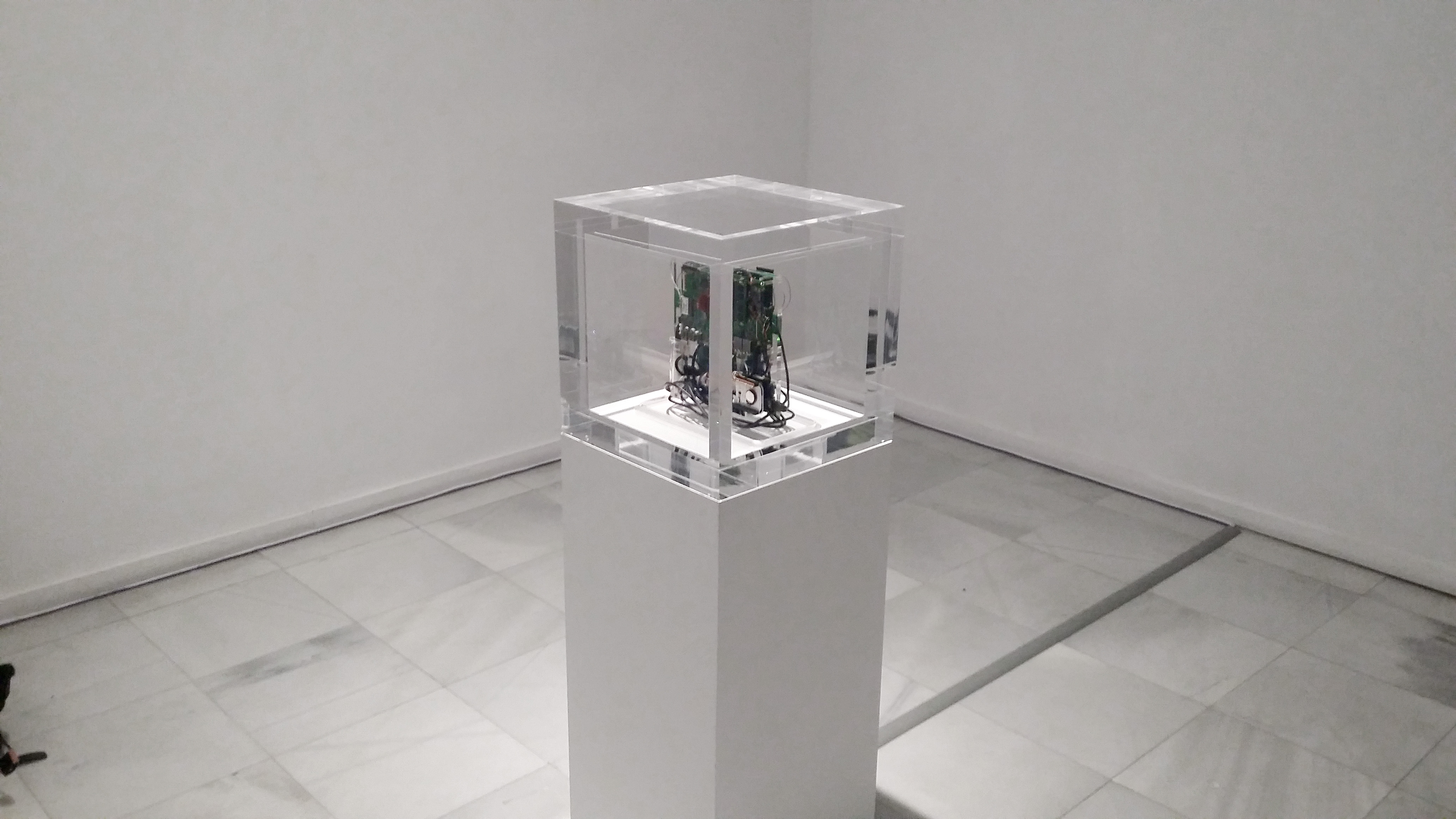
Autonomy Cube (2014) by Trevor Paglen & Jacob Appelbaum (image source).
Sun 07.02.2016 | Archive, Curate, Educate: Active Media Arts
This panel brought together curatorial, artistic, and academic perspectives on media art in order to discuss the role that archives can play in curation, spatial design, and technology-based art practice. The panelists discussed Erkki Kurenniemi’s archival and technological art. In the 1960s, Kurenniemi started documenting everything he encountered in his daily life (through making videos, taking pictures, and by collecting everyday objects) because he wanted to create a digital generic for human life. He created this constant log of his life with the aim of producing material for a digital virtual world, to be compiled in 2048 – when computers should be powerful enough to somehow recreate his life. Constant (Michael Murtaugh and Nicolas Malevé) has been working on a series of experiments in connection with the archive of Kurenniemi.
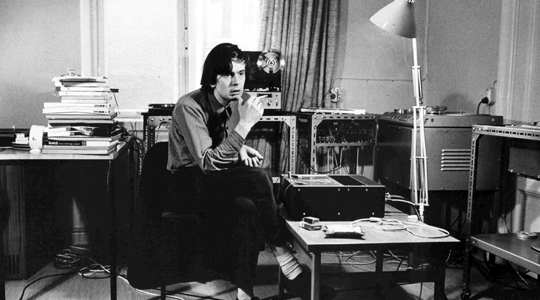
Erkki Kurenniemi in the Helsinki University studio in 1971. Photo by Martti Brandt (image source).
Sun 07.02.2016 | MediaActs
Researcher and artist Heba Amin talked about some of her projects that address migration, which was one of the hot topics at Transmediale. Among the cases she presented was ‘Homeland is not a series’, a media hack on the set of the popular US TV series Homeland. Arabic street artists engineered subversive graffiti on the set because they don’t agree with the representation of Syrians in the series. Some months later, the episode was broadcasted, and the show unknowingly critiquing itself. One of the Arabic quotes, translated as ‘Homeland is watermelon’ (watermelon is a vernacular term for joke in Arabic) caused amusement and proves that laughter as a tactic of resistance brings people together. Heba Amin calls for other media absurdities, and for those who spot them to use #watermelonrevolution.
Sun 07.02.2016 | Making Planetary Scale Gestures
Before queuing up for the last keynote, I went to see James Bridle’s talk about planetary scale gestures. He took part in a panel that examined global rhythms, information flows, contours, and bruisings made upon the Earth in order to gesture towards alternative possibilities to the current planetary scale discourse. Bridle shared some cases that inspire him on the topic. One of these, the series ‘Continuous Moment’ by the architecture firm Superstudio, consists of dystopian photo collages imagining vast, new, almost featureless, sculptural installations that slowly absorb and subsume the world as they spread across it. Bridle links this to Google Earth that now subsumes the Earth in which the visions of Superstudio seem to fit almost exactly. This is because they operate at a similar scale, but also because of the proliferation of networks such as Google, and because of all the infrastructures that rest on it. It is exactly this spread of politics that Superstudio was originally critiquing.
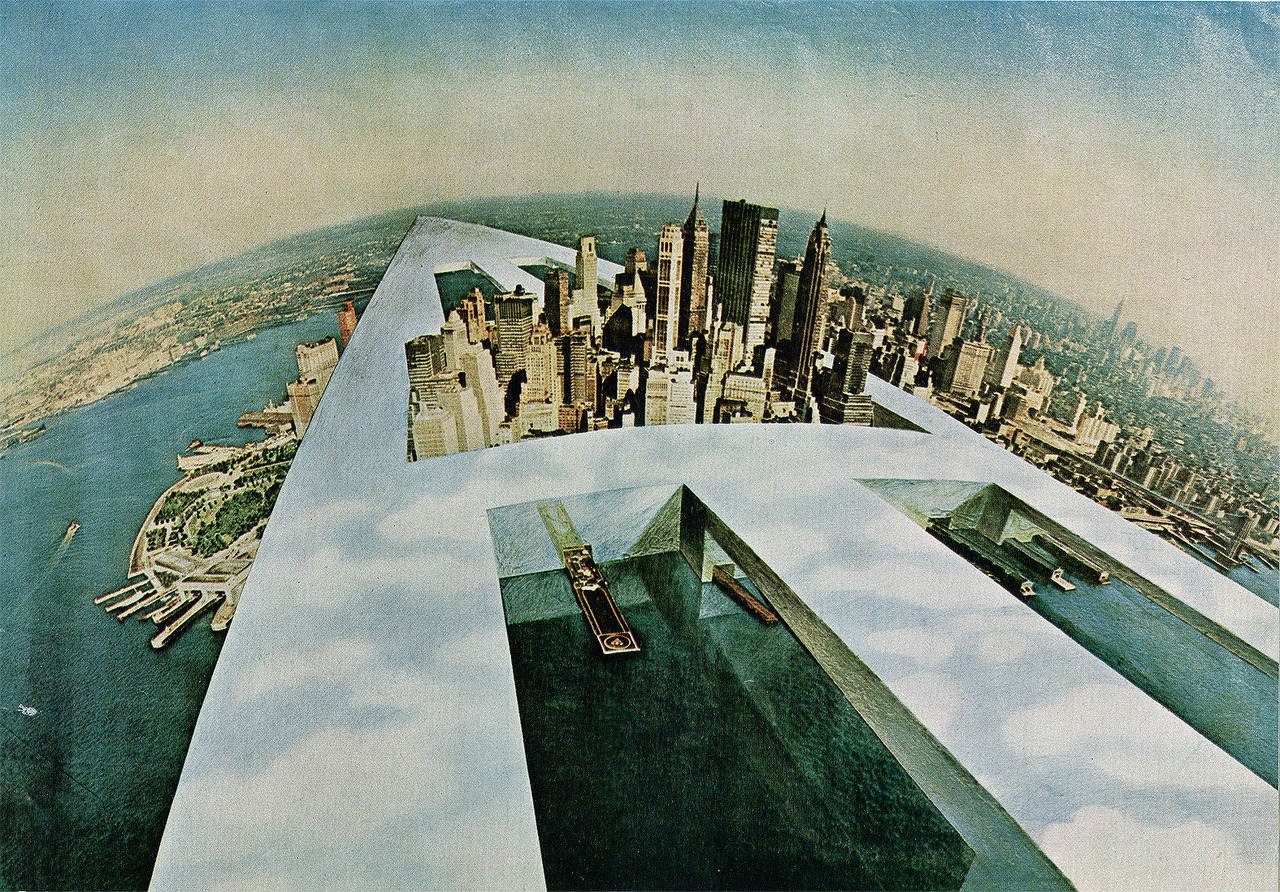
Continuous Moment by Superstudio, a gridded structure that the architects suggested would cover the planet (image source)

Bridle thinks it might be possible to build planetary scale systems, but that it is probably dangerous. He is more interested in our relationship to those systems, and states that it is important to know how planetary systems (such as satellites) see, since they see in a different way than us humans. He explores this relationship within his series Rainbow Planes that are 1:1 outlines of an aircraft as seen by a satellite.

Satellite view of an aircraft in Google Earth. (image source).
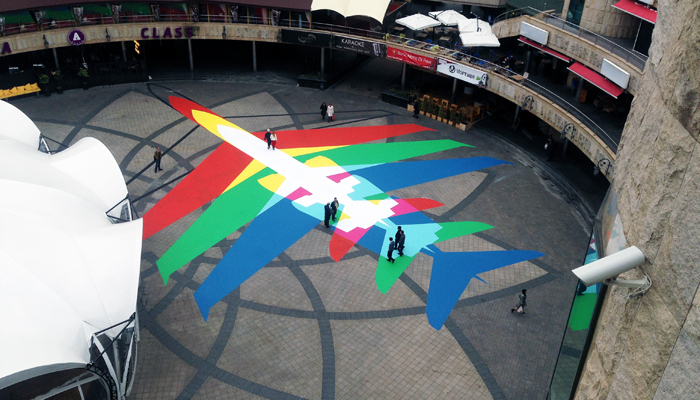
Rainbow Plane by James Bridle for the Future Generation Art Prize in Kiev, Ukraine (image source)
Sun 07.02.2016 | Keynote Conversation: Anxious to Act
Hito Steyerl connects a single frame of a scrambled video from the Snowden documents to the spectrum of human vision. She proposes a new way of decrypting this image. If you focus very strongly on the center of the image, you will see that the image starts to move slightly and you are looking at a sea, and the reflection of the sun, you are looking at the sea of data. It is a very cheap methodology, called apophenia, which happens when you see faces in clouds, or a man on the moon. She thinks that many analysts use this methodology as well. Someone must have seen a specific face in the noise of this image, otherwise there is absolutely no explanation why a certain person got hit and blinded by a drone strike in Gaza in 2012. The woman that got hit she was not a militant, she was not associated to militants, not even her address was associated to militants, there was absolutely no reason why this location was targeted. The only reason Steyerl can see is that some act of apophenia was performed on some unknown kind of noise. Steyerl talks about the act of filtering signal from noise as a political act, expressed through different technologies. A very smartly connected performance that is definitely worth to watch!
Deep Web
Because there were only a few artistic installations at Transmediale, I’m very happy that I took some time to experience the Deep Web installation by Robert Henke and Christopher Bauder that was part of the program of CTM festival. Deep Web is an installation using 12 lasers and a matrix of 175 moving balloons to create a dramatic 3D sculpture of lines and dots floating in space above the audience that bring a luminous analogy to the nodes and connections of digital networks to life. Deep Web has been developed for Fete des Lumieres in Lyon 2015, but was cancelled after the IS attacks in Paris in November 2015. So the premiere took place at CTM Festival in Kraftwerk, an impressive former power factory where the world-renowned techno club Tresor is located. I took about 100 photos during the show, and some videos, which are just poor impressions of an installation that you can only truly experience in real life.

Deep Web by Robert Henke and Christopher Bauder (Image source)
